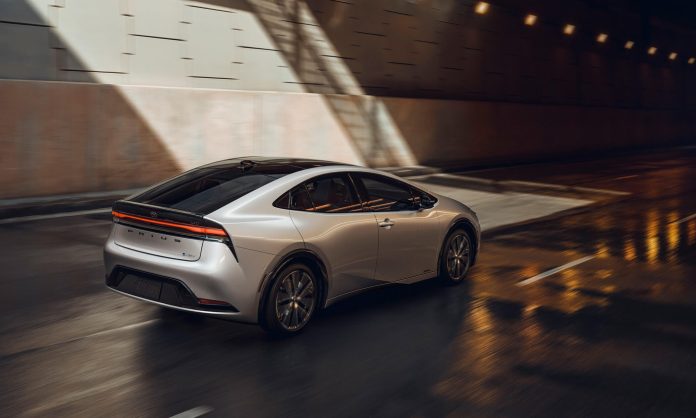Toyota announced during a technical conference on June 13, 2023, that Toyota has identified suitable materials to commercialize solid-state battery technology around 2027-2028, intending to introduce new energy vehicles powered by these batteries to the market.
Out of the 2.17 million electric vehicles (including BEV, PHEV, HEV, FCV) sold by Toyota in 2022, BEVs accounted for less than 1%, indicating a significant lag behind its competitors in the BEV sector. However, Toyota possesses over 100 solid-state battery patents and showcased a solid-state battery prototype as early as 2020, finally catching up in the solid-state battery race.
According to TrendForce’s analysis, current new energy vehicles primarily use nickel-cobalt-manganese (NCM) or lithium iron phosphate (LFP) as cathode materials, and graphite as anode material. NCM batteries offer higher energy density, with a system limit of around 250-260Wh/kg, but come with higher costs and a risk of thermal runaway. On the other hand, although LFP batteries are safer, less prone to thermal runaway, and more cost-effective, their energy density is significantly lower than that of NCM, with a system limit of approximately 160-170Wh/kg.
To achieve energy densities surpassing 300Wh/kg and reaching the 400-500Wh/kg target, lithium batteries will primarily focus on adjusting anode materials in the future. This includes incorporating higher-capacity materials such as silicon oxide, silicon carbon, or metallic lithium to increase the capacity of individual battery cells. However, using these high-activity anode materials in combination with traditional liquid electrolytes carries a higher risk of triggering thermal runaway during the charging and discharging processes.
In contrast, solid-state electrolytes provide structural stability, effectively preventing short circuits in batteries. By removing the separator film, solid-state batteries achieve a more compact size and higher energy density compared to liquid lithium batteries. In summary, solid-state batteries solve the challenge of balancing safety and energy density that traditional lithium batteries face, making them the most promising battery solution for future new energy vehicles.
However, during the development of solid-state battery technology, Toyota encountered an increase in interface impedance and a decrease in electrode-electrolyte adhesion due to the transition from liquid to solid electrolytes. These issues lead to battery capacity decline and affect cycle life, posing one of the many technical challenges in the current development of solid-state batteries.
Considering the difficulties involved, some battery manufacturers have shifted their focus to semi-solid-state batteries, such as CATL and Welion. Given Toyota’s current reliance on Chinese liquid battery technology for their development of solid-state batteries, it seems like a formidable task to achieve a breakthrough. Even if they overcome these challenges, the ability to replicate the success from the lab to actual vehicles remains uncertain.
Nevertheless, considering Toyota’s current situation, it may be more reasonable to place their bet on solid-state batteries rather than persistently chasing after the liquid battery sector. Although this strategic move carries high risks, it represents Toyota’s best and potentially last opportunity for overtaking competitors in the new energy vehicle field.

